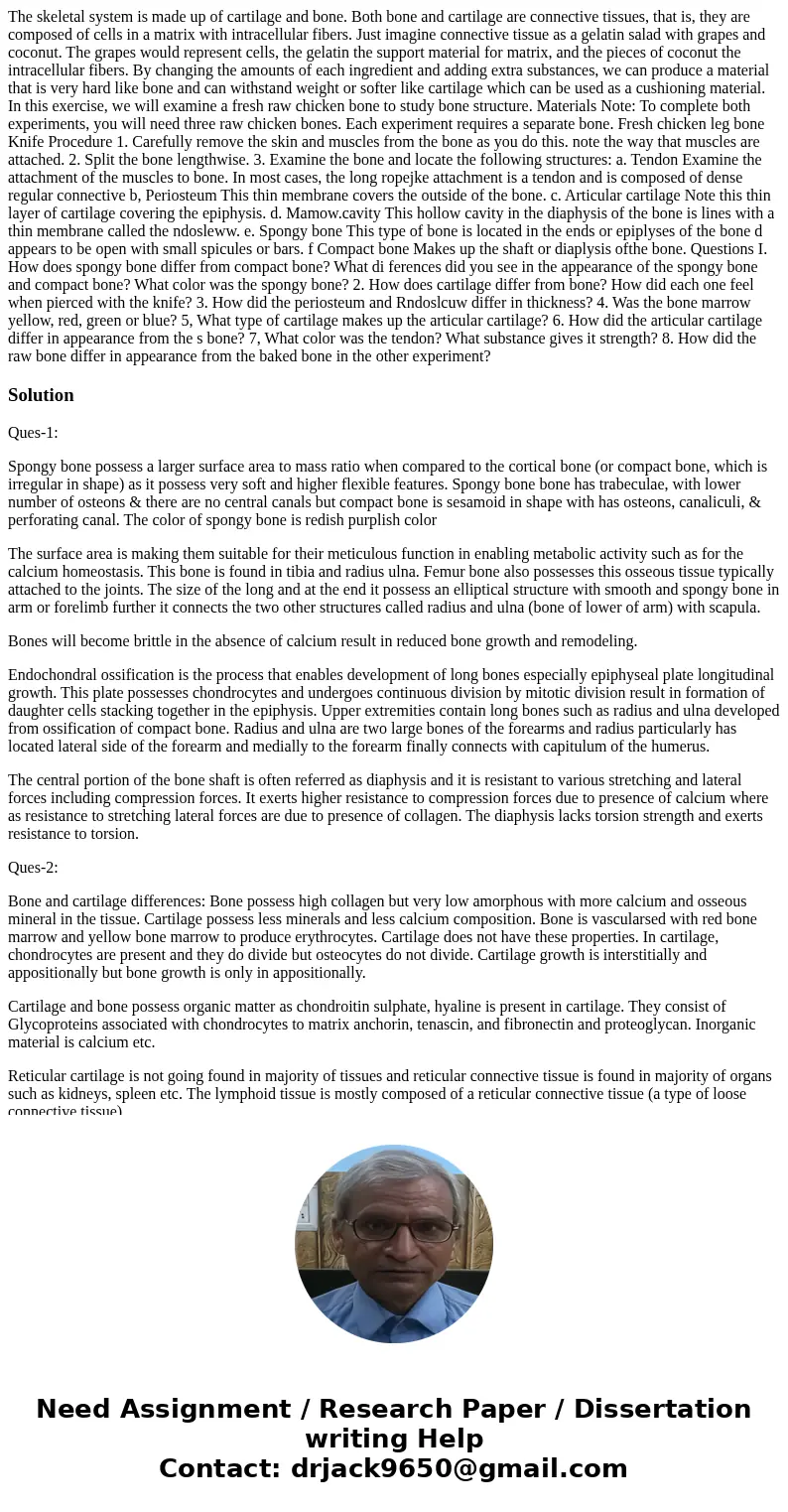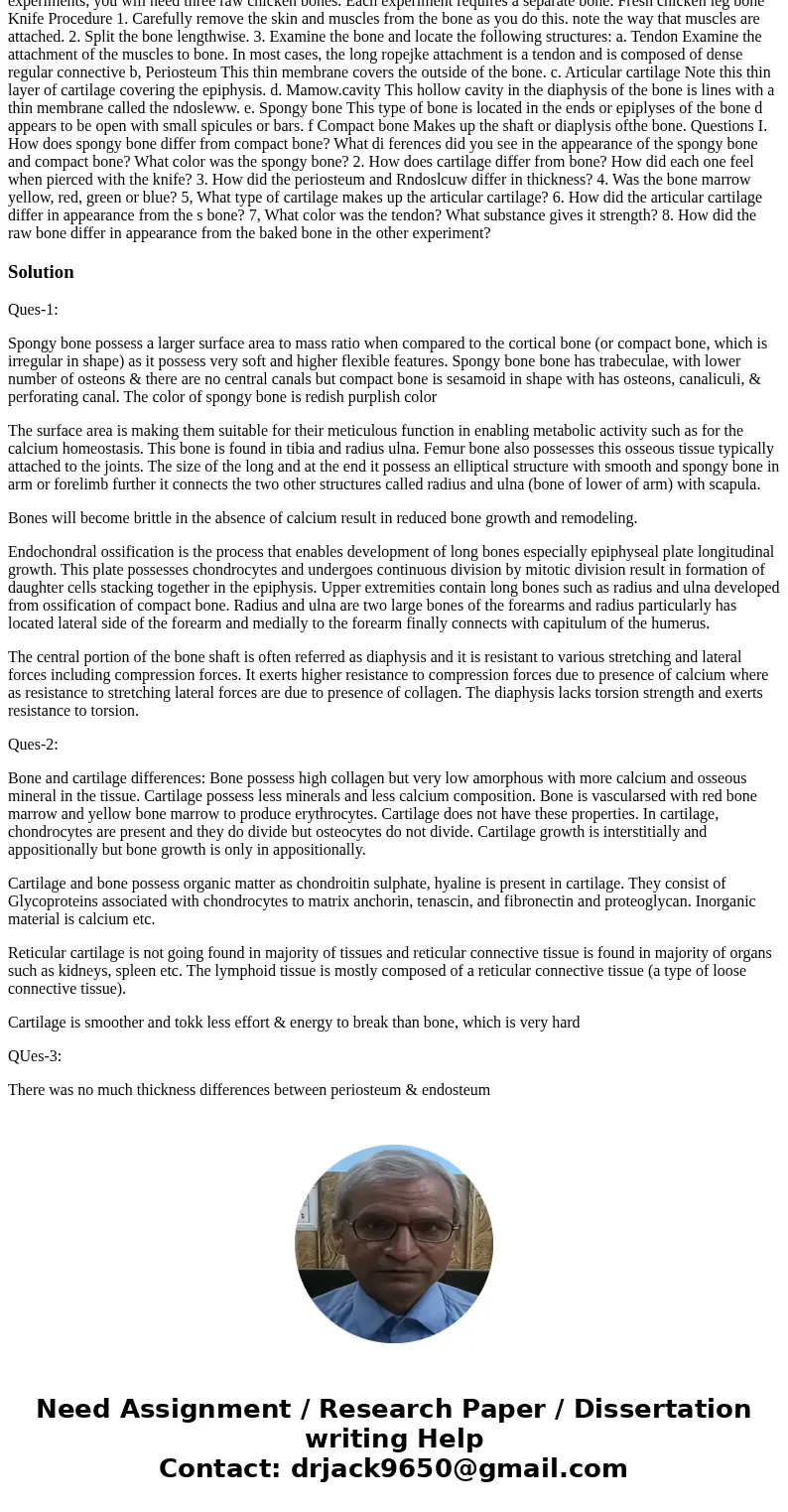The skeletal system is made up of cartilage and bone Both bo
Solution
Ques-1:
Spongy bone possess a larger surface area to mass ratio when compared to the cortical bone (or compact bone, which is irregular in shape) as it possess very soft and higher flexible features. Spongy bone bone has trabeculae, with lower number of osteons & there are no central canals but compact bone is sesamoid in shape with has osteons, canaliculi, & perforating canal. The color of spongy bone is redish purplish color
The surface area is making them suitable for their meticulous function in enabling metabolic activity such as for the calcium homeostasis. This bone is found in tibia and radius ulna. Femur bone also possesses this osseous tissue typically attached to the joints. The size of the long and at the end it possess an elliptical structure with smooth and spongy bone in arm or forelimb further it connects the two other structures called radius and ulna (bone of lower of arm) with scapula.
Bones will become brittle in the absence of calcium result in reduced bone growth and remodeling.
Endochondral ossification is the process that enables development of long bones especially epiphyseal plate longitudinal growth. This plate possesses chondrocytes and undergoes continuous division by mitotic division result in formation of daughter cells stacking together in the epiphysis. Upper extremities contain long bones such as radius and ulna developed from ossification of compact bone. Radius and ulna are two large bones of the forearms and radius particularly has located lateral side of the forearm and medially to the forearm finally connects with capitulum of the humerus.
The central portion of the bone shaft is often referred as diaphysis and it is resistant to various stretching and lateral forces including compression forces. It exerts higher resistance to compression forces due to presence of calcium where as resistance to stretching lateral forces are due to presence of collagen. The diaphysis lacks torsion strength and exerts resistance to torsion.
Ques-2:
Bone and cartilage differences: Bone possess high collagen but very low amorphous with more calcium and osseous mineral in the tissue. Cartilage possess less minerals and less calcium composition. Bone is vascularsed with red bone marrow and yellow bone marrow to produce erythrocytes. Cartilage does not have these properties. In cartilage, chondrocytes are present and they do divide but osteocytes do not divide. Cartilage growth is interstitially and appositionally but bone growth is only in appositionally.
Cartilage and bone possess organic matter as chondroitin sulphate, hyaline is present in cartilage. They consist of Glycoproteins associated with chondrocytes to matrix anchorin, tenascin, and fibronectin and proteoglycan. Inorganic material is calcium etc.
Reticular cartilage is not going found in majority of tissues and reticular connective tissue is found in majority of organs such as kidneys, spleen etc. The lymphoid tissue is mostly composed of a reticular connective tissue (a type of loose connective tissue).
Cartilage is smoother and tokk less effort & energy to break than bone, which is very hard
QUes-3:
There was no much thickness differences between periosteum & endosteum


 Homework Sourse
Homework Sourse